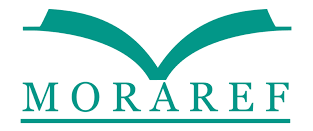TRANSLATING WEBTOON’S SOUND EFFECTS: A CASE OF INSTANTMISO’S SIREN’S LAMENT
DOI:
https://doi.org/10.22515/crossover.v2i1.5116Keywords:
Sound Effect, Comic Translation, Comic Translation StrategyAbstract
The aim of this research is to analyze sound effect translation. The objectives of this research are; to describe the categories of sound effect on web comics Siren’s Lament, and to reveal comic translation strategies to translate sound effect on web comics Siren’s Lament. The data are taken from instantmiso’s (pen name) web comics entitled Siren’s Lament season 1 and season 2 in English and Indonesian version which can be found on Webtoon. Observation and documentation are techniques of collecting data used in this research. For technique of analyzing data, the researcher used the theory of Spradley (1979), involving domain, taxonomy, componential table, and finding cultural themes. Among 99 data found in the analysis, some categories are obtained. Those categories of sound effect were; Impact (26 data (26.3%)), Friction (11 data (11.1%)), Air Current (23 data (23.2%)), Sound involving Liquid and Food (17 data (17.2%)), Breakage (3 data (3.0%)), Explosion and Gunshot (1 data (1.0%)), Sound with Long Duration (13 data (13.1%)), and Pitch (5 data (5.1%)). The dominant data of sound effect category is Impact with 26 data. In terms of strategies, the results showed that 70 data applied repetition strategy, 2 data applied translation strategy, 80 data applied Substitution strategy, and 1 data applied Deletion strategy. Substitution becomes dominant strategy and shows that the translator does not change the overall meaning, but only translates the sound effect into a typical sound in Indonesia.
Downloads
References
Bachri, B. S. (2010). Meyakinkan Validitas Data Melalui Triangulasi Pada Penelitian Kualitatif. Jurnal Teknologi Pendidikan , 46-62.
Delabastita, D. (2015). Translation and Mass-Communication: Film and T.V. Translation. http://10.1075/babel.35.4.02del
Despaul, J. (2015). Going Back for Second: Translatting Comic Book Dialogue, Humor and Sound Effects. Belgia.
Garces, C. V. (2014). Onomatopoeia and Unarticulated Language in The Translation and Production of Comics Books. In F. Zanettin, Comics in Translation. Spain: Routledge.
Hidayat, A. N. (2016). The Onomatopoeia in Robert Vendetti's Comic "The Flash". Makassar: Universitas Islam Negeri Alauddin Makassar.
Jakobson, R. (1960). Closing Statement: Linguistics and Poetics. In T. A. Sebeok, Style in Language (pp. 350-377). New York: The Technology Press of Massachustts Institute of Technology & John Wiley& Sons, Inc.
Kaindl, K. (2010). Comics in Translation. In K. Kaindl, Handbook of Translation Studies (pp. 36-40).
Khodijah, S. W. (2019). An Analysis of Song Lyrics Translation Techniques and Quality Assessment in Four Maher Zain'a English Songs. Surakarta: Institut Agama Islam Negeri Surakarta.
Kokko, V. (2013). KPOW, CHINK, SPLAT: Translations of Sound Effects in Seven Comics. Finlandia: University of Turku.
Moleong, L. J. (2001). Metodologi Penelitian Kualitatif. Bandung: Remaja Rosdakarya.
Putri, Y. C. (2013). Metaphorical Expression in Andrea Hirata's and John Colombo's Edensor. Yogyakarta: Universitas Negeri Yogyakarta.
Schnetzer, M. (2004). Problems in The Translation of Comics and Cartoons. Analele Stiinfice , 90-100.
Shastri, P. D. (2012). FUndamental aspects of translation (English: Eastern economy ed.). New Delhi: PHI Learning.
Siwi, A. R. (2015). An Analysis of Onomatopoeia Translation in the Bilingual Comics Wow!: Aladdn's Magic Lamp, Cinderella and the Ugly Duckling. Surakarta: Universitas Sebelas Maret.
Spradley, J. P. (1979). The Ethnographic Interview. United States of America: Harcourt Brace Jovanovich College.
Wonho Jang & Jung Eun Song. (2017). Webtoon as A New Korean Wave in The Process of Glocalization. Kritika Kultura 29 , 168-187.
Zanettin, F. (2014). Comics in Transation: An Overview. In F. Zanettin, Comics in Translation. Italy: Routledge.
Zanettin, F. (2014). Comics in Translation. USA: Routledge.
Downloads
Published
How to Cite
Issue
Section
Citation Check
License
Copyright (c) 2022 Dinda Nur Puspitasari

This work is licensed under a Creative Commons Attribution-ShareAlike 4.0 International License.
Authors retain copyright and grant the journal right of first publication with the work simultaneously licensed under a Creative Commons Attribution 4.0 International License that allows others to share the work with an acknowledgment of the work's authorship and initial publication in this journal.

















